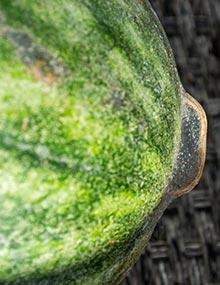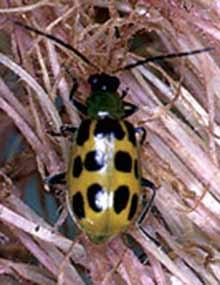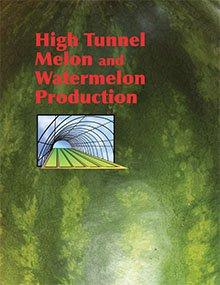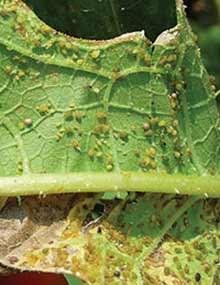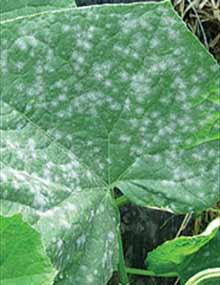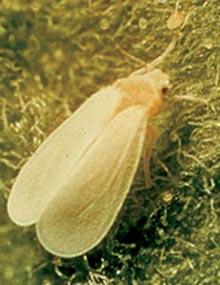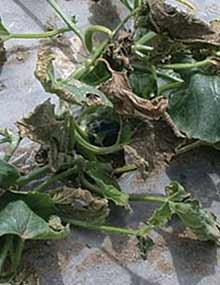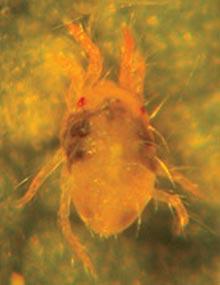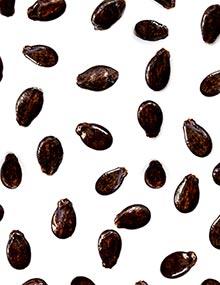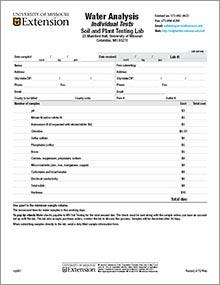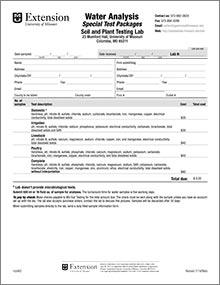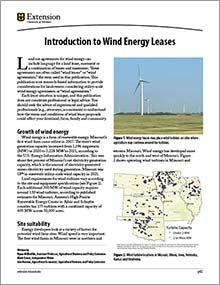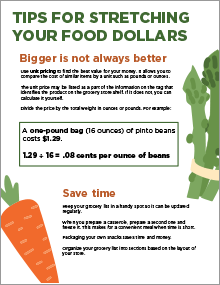High Tunnel Melon and Watermelon Production, Page 02
Revised
Maintaining healthy, nonstressed plants, managing the high tunnel environment properly, preserving beneficial insects and early pest detection will prevent many pests from becoming a problem within the high tunnel.
High Tunnel Melon and Watermelon Production, Page 05
Revised
Within two weeks after transplanting, begin scouting for cucumber beetles in the high tunnel. Use yellow sticky traps to detect cucumber beetles.
High Tunnel Melon and Watermelon Production, Page 08
Revised
Thrips are small, elongated insects that can be a serious insect pest of high tunnel melons and watermelons and are usually found clustered in flowers and on the underside of leaves.
High Tunnel Melon and Watermelon Production
Revised
High tunnels are low-cost, passive, solar plant forcing structures that use no fossil fuels for heating or venting and provide many benefits to horticulture crop producers
High Tunnel Melon and Watermelon Production, Page 03
Revised
Melon aphids congregate on lower leaf surfaces and cause cupping of the leaves
High Tunnel Melon and Watermelon Production, Page 06
Revised
The dry, humid and dense plant growth within a high tunnel is optimal for development of powdery mildew.
High Tunnel Melon and Watermelon Production, Page 09
Revised
Whiteflies are small, soft-bodied insects with wings covered with white, powdery wax that damage plants by sucking the sap and transmitting harmful viruses.
High Tunnel Melon and Watermelon Production, Page 04
Revised
Bacterial wilt is a serious disease of melons that is transmitted by spotted and striped cucumber beetles that feed on melon foliage.
High Tunnel Melon and Watermelon Production, Page 07
Revised
Spider mites are small, oval-shaped arthropods that can be found on the underside of leaves, where they congregate and suck sap from the plant.
High Tunnel Melon and Watermelon Production, Page 10
Revised
Find sources of melon and watermelon seeds
Water Analysis — Individual Tests Form
Revised
The Soil and Plant Laboratory can test your water for irrigation, domestic, poultry or livestock suitability or run specific individual tests. Water analysis can be used to determine suitability for several purposes, such as for homeowners, irrigation or for use by livestock and poultry.
Water Analysis — Special Test Packages
Revised
The testing packages in this form target specific nutrients to provide a more complete picture of water quality for a particular use. Use this form to obtain a detailed water analysis from the MU Soil and Plant Testing Lab.
Collective Bargaining 1: Historical Models of Collective Bargaining in the U.S. - Page 3
Revised
Employers ability to pay
Product market factors
Collective Bargaining 1: Historical Models of Collective Bargaining in the U.S. - Page 6
Revised
Avoidance of competitive unionism Avoidance of competitive unionism
Union bargaining strength is also weakened by wage competition between more than one union in each industry or with a particular employer.
Collective Bargaining 3: Effective Negotiations, Background Information - Page 2
Revised
Research agenda Research agenda
Early in the bargaining process, a local union may want to develop a research agenda to gather data useful in negotiations.
Collective Bargaining 5: Bargaining Techniques
Revised
In this section, some of the major techniques and tactics relevant to the actual bargaining sessions with management are discussed. Visit our site today.
Collective Bargaining 5: Bargaining Techniques - Page 4
Revised
Caucus
An important tactic in the collective bargaining process is the effective use of a caucus. A caucus is the opportunity for the parties to withdraw temporarily from direct negotiations one another. A caucus can and should be used in several different situations to make sure that negotiations are progressing in an appropriate manner.
Collective Bargaining 1: Historical Models of Collective Bargaining in the U.S. - Page 4
Revised
Labor market factors Labor market factors
The employer's ability to pay is also influenced by its ability to cut the costs of production by increasing productivity.
Collective Bargaining 1: Historical Models of Collective Bargaining in the U.S. - Page 7
Revised
Development of appropriate bargaining structures Development of appropriate bargaining structures
In addition to worker organization, a union must also develop a bargaining structure that allows the union t
Introduction to Wind Energy Leases
New
Learn what Missouri landowners should consider before entering into utility-scale wind energy agreements. Wind agreements have implications for land use, finances, liability, environment, and the community.
Eating on a Budget Handout (Bundle of 25)
Revised $12
This handout provides tips on stretching your food dollars and discusses unit pricing, getting the most out of the food you buy, and other ways to save money on your food budget.
Collective Bargaining 3: Effective Negotiations, Background Information - Page 3
Revised
Preparation of demands (changes to the CBA) Preparation of demands (changes to the CBA)
There are two aspects of the process of preparing bargaining demands or proposals.
Build a Healthy Plate Handout (Bundle of 25)
Revised $12
Learn about the latest dietary guidelines, including eating more fruits, vegetables, whole grains, and lower-fat dairy products; eating less sugar, fat, salt/sodium; varying protein choices; and balancing calories for weight maintenance.
